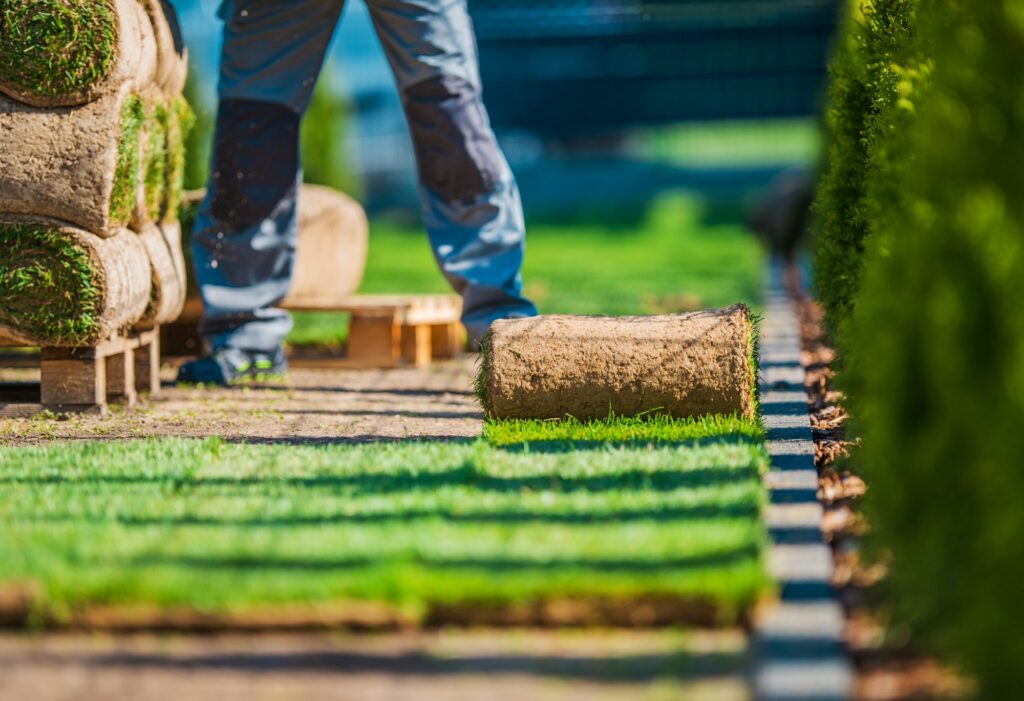Lawn Renovation Glossary for Lawn Lovers

A
- Aeration: The process of perforating the soil to improve water, nutrient, and air penetration to grass roots.
- Annual Ryegrass: A fast-growing grass seed often used for quick germination during lawn renovation.
- Amendment: A substance added to soil to improve its properties, such as compost, lime, or gypsum.
- Annual Weed: Weeds that complete their life cycle in one season, often removed during lawn renovation.
B
- Bare Spot Repair: Fixing patches of lawn where grass has died, often involving overseeding or sod placement.
- Broadcast Spreader: A tool used to evenly distribute seed, fertilizer, or soil amendments across a lawn.
- Broadleaf Weed: Weeds with wide, flat leaves that may be removed or treated during renovation.
C
- Core Aeration: A specific type of aeration where small plugs of soil and grass are removed to reduce compaction.
- Compost: Decomposed organic matter used to improve soil health and encourage healthy grass growth.
- Cool-Season Grass: Grass varieties that thrive in cooler climates, such as fescue or Kentucky bluegrass.
- Cultivation: Loosening or breaking up soil to prepare it for reseeding or sod installation.
D
- De-thatching: The process of removing the layer of dead grass, roots, and debris (thatch) between soil and grass blades.
- Dormant Seeding: Planting grass seed during the dormant season to germinate in early spring.
- Drainage: The ability of the soil to channel water away from the lawn surface, crucial for healthy grass.
E
- Erosion Control: Techniques used to stabilize soil and prevent erosion during or after lawn renovation.
- Establishment: The period when new grass seedlings take root and begin growing into a mature lawn.
F
- Fertilization: Adding nutrients to the soil to encourage healthy grass growth during and after renovation.
- Fine Fescue: A cool-season grass type often used for shady areas in lawn renovation projects.
- Full Renovation: Completely redoing a lawn, including removing old grass, improving soil, and planting new seed or sod.
G
- Grading: Adjusting the slope or level of the lawn to improve drainage and eliminate low spots.
- Grass Seed Blend: A mixture of different grass species selected for specific lawn conditions.
- Germination: The process by which grass seeds sprout and begin to grow.
H
- Herbicide: A chemical used to kill weeds before starting the renovation process.
- Hydroseeding: A seeding process where grass seed, fertilizer, and mulch are sprayed onto the soil.
L
- Lawn Roller: A tool used to press seeds or sod firmly into the soil for better contact and growth.
- Lime Application: Adding lime to soil to raise its pH level, making it less acidic and more suitable for grass growth.
M
- Mulch: A layer of material applied over seeded areas to retain moisture and protect seeds from erosion.
- Mechanical Seeding: The use of machinery to plant grass seed directly into the soil, often during overseeding.
- Mowing Height: The recommended height for cutting grass, adjusted to encourage new growth during renovation.
N
- Nitrogen: A key nutrient added during fertilization to promote lush, green grass growth.
- No-Till Seeding: Planting grass seed without disturbing the existing soil, often used in overseeding.
O
- Overseeding: Spreading grass seed over an existing lawn to improve density and repair thinning areas.
- Organic Matter: Decomposed plant or animal material added to soil to improve its fertility.
P
- pH Testing: Measuring the acidity or alkalinity of soil to determine if amendments like lime or sulfur are needed.
- Plugging: Planting small plugs of grass in bare areas to encourage growth and fill gaps.
- Pre-Emergent Herbicide: A herbicide applied before weeds sprout to prevent them from growing.
R
- Regrading: Reshaping the lawn surface to improve drainage and eliminate uneven areas.
- Reseeding: Planting new grass seed in areas where the lawn has thinned or been damaged.
- Rolling: Using a lawn roller to smooth soil or ensure good contact between seed/sod and soil.
- Root Zone: The area in the soil where grass roots grow, critical for lawn health.
S
- Soil Aerator: A tool used to create holes in the soil to reduce compaction and improve air and water flow.
- Soil Amendment: Any material added to soil to improve its physical or chemical properties.
- Soil Test: An analysis of soil nutrients and pH to determine what treatments are needed.
- Starter Fertilizer: A fertilizer with a higher phosphorus content used to promote root development in new grass.
T
- Topdressing: Spreading a thin layer of compost or soil over a lawn to improve soil quality and promote growth.
- Turfgrass: Grass species used specifically for lawns, sports fields, and recreational areas.
- Thatch: A layer of dead grass and organic matter that can build up and prevent water and nutrients from reaching the soil.
U
- Uneven Lawn: A lawn with bumps, dips, or slopes that require leveling or regrading during renovation.
- Underseeding: Planting grass seed beneath existing grass to thicken the lawn.
W
- Warm-Season Grass: Grass species that grow best in warm climates, such as Bermuda or Zoysia grass.
- Watering Schedule: A planned approach to watering a newly renovated lawn to ensure proper germination and growth.
- Weed Control: Methods used to remove or prevent weeds during the renovation process.
Z
- Zoysia Grass: A warm-season grass known for its drought tolerance and suitability for lawn renovation in hot climates.
- Zero-Till Renovation: Renovating a lawn without removing existing grass, often by overseeding or aerating.

